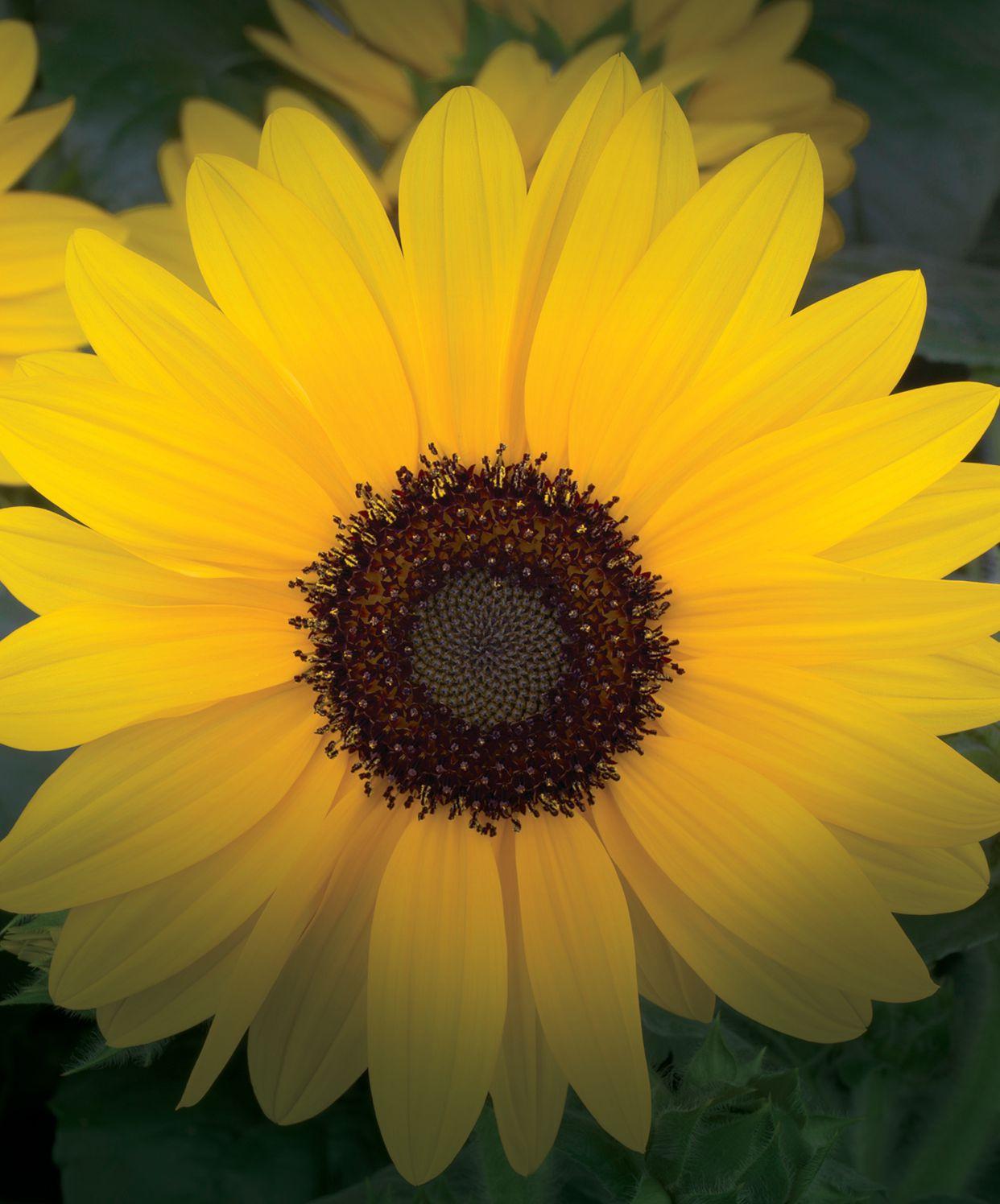



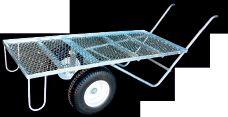




































































Protecting your cannabis crop from these tiny pests that can cause big issues. | 18
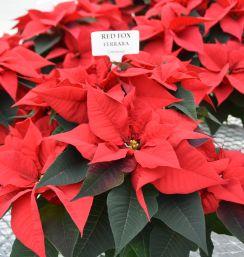
Poinsettia Season Recap The 2017 season saw fantastic sales and marketability.
BY MELHAM SAWAYA
Spring IPM
Get your spring crop off to a good start with these tips.
BY DRS. SARAH JANDRICIC AND CHEVONNE CARLOW
Favourite Florals
Taking a look at some of the favourite varieties from the University of Guelph’s garden trials.
BY RODGER TSCHANZ

While I may be a new face to most of you, I’m only here for one issue –filling in for Dave while his successor gets ready to continue providing commercial greenhouse growers with content to help you grow in profitability and realize market opportunities.
I usually work with growers who are in a different sector of agriculture. I work on Top Crop Manager, Potatoes in Canada and Drainage Contractor The kind of growers I interact with at annual conferences and crop diagnostic days grow hundreds, if not thousands of acres and mostly grow crops like corn, potatoes, soybeans, canola, dry beans and cereals.
While greenhouse growers versus cash crop growers seemed quite a bit different at first, the more reading, editing and speaking with researchers I did, the more I realized how alike we all really are. While the crops may differ, all growers –whether we grow in a greenhouse or in a field – deal with very similar highs and lows.
help when we need it.
I especially loved to see greenhouse growers taking matters into their own hands and offer up some unique solutions to issues like pest management. Of note is the story I read in the November issue of Greenhouse Canada about “Chili,” the Belgian shepherd used by NatureFresh farms to sniff out pepper weevils within the company’s 53 hectares of greenhouses.
Business management is also a topic that draws parallels: labour shortages, minimum wage hikes and grower-consumer interactions are all issues any producer is interested in and warrant discussion.
While our “lows” may be similar, so too are the positives. Highlighting innovative growers like the annual “Top 10 under 40” coverage offered by this magazine, as well as farming awards like Canada’s Outstanding Young Farmer go a long way in recognizing the contributions young movers and shakers make to the sector. We should continue to applaud their hard work.
“Whether we grow corn, cannabis or coreopsis, we have help.”
Many of our problems are the same: pests emerge and wreak havoc on plants, resulting in severe yield losses if the proper management strategies aren’t in place. (I especially liked the IPM techniques offered on page 20.) We even deal with similar disease pressures, like Fusarium and Botrytis
Luckily for us growers, there are teams of scientists and government extension specialists working tirelessly to research and test different methods to protect our crops. So whether we grow corn, cannabis or coreopsis, we have the
Finally, I’m so happy to introduce the new editor for Greenhouse Canada. Greta Chiu will be taking the helm, starting with the forthcoming March/April issue. Greta has a background in plant agriculture, studying at the University of Guelph and earning her master of science. She has previously worked as a research assistant and as an agricultural technical writer for a marketing firm. She will continue to provide readers with creative and engaging content. Don’t forget to get in touch – via email or social media to share your thoughts.
905.431.8892
National Advertising Manager SARAH OTTO sotto@annexweb.com 888.599.2228 ext 237
Account Coordinator MARY BURNIE mburnie@annexweb.com 519.429.5175 888.599.2228 ext. 234
Occasionally, Greenhouse Canada will mail information on behalf of industry-related groups whose products and services we believe may be of interest to you. If you prefer not to receive this information, please contact our circulation department in any of the four ways listed above. No part of the editorial content of this publication may be reprinted without the publisher’s written permission. ©2018 Annex Publishing and Printing Inc. All rights reserved. Opinions expressed in this magazine are not necessarily those of the editor or the publisher. No liability is assumed for errors or omissions.
All advertising is subject to the publisher’s approval. Such approval does not imply any endorsement of the products or services advertised. Publisher reserves the right to refuse advertising that does not meet the standards of the publication.


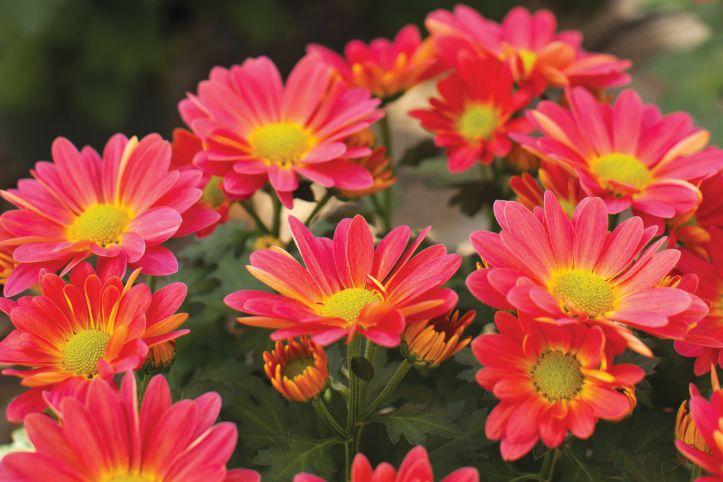
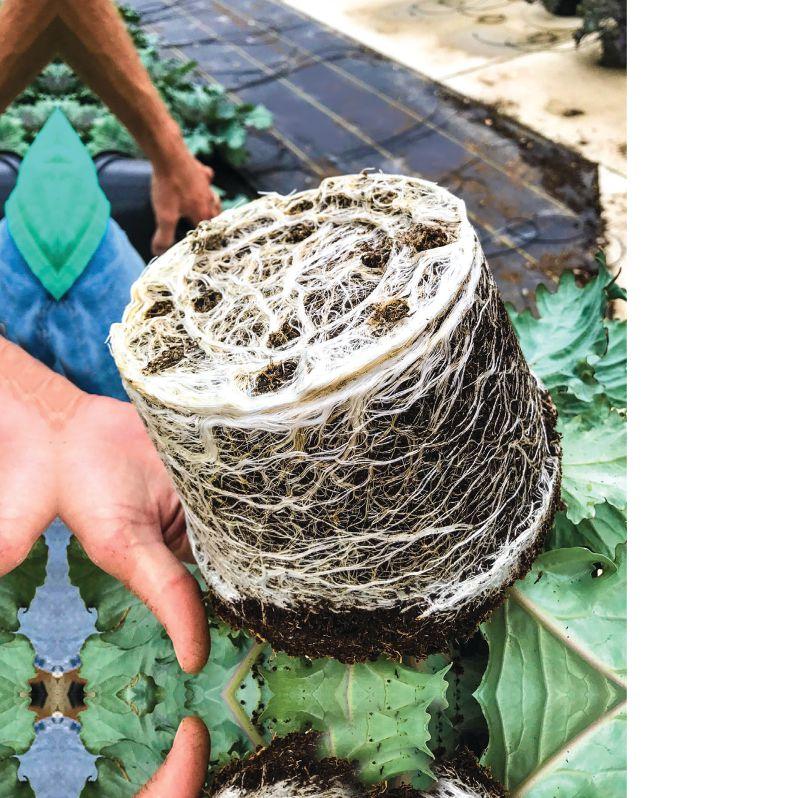

Greenbelt Microgreens earned this year’s Premier’s Award for Agri-Food Innovation Excellence.
Premier Kathleen Wynne announced Ontario’s highest honour for innovative solutions supporting the province’s powerhouse agri-food industry at the annual Premier’s Awards for Agri-Food Innovation Excellence.
The Stouffville-based company received the top honour for developing an eco-friendly process to grow organic microgreens year-round.
The company’s state-of-the-art facility uses several green features. For example, cisterns collect rainwater used to irrigate the crops, and each evening ceiling curtains automatically close to keep warm air inside while a glass roof opens up to release excess hot air on sunny days. Greenbelt Microgreens grows nutrientdense sunflower sprouts, pea shoots, wheat grass and other microgreens that can be produced on an average 10-day growth cycle, with a shelf life of 13 days.
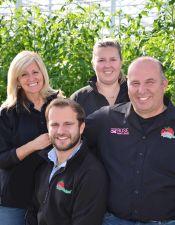
Canopy Growth Corporation and Canopy Rivers Corporation has announced a definitive joint venture agreement to form a new company, Les Serres Vert Cannabis Inc., together with Les Serres Stéphane Bertrand Inc., a large-scale tomato greenhouse operator in Mirabel, Quebec.
Bertrand currently produces tomatoes and other vegetables under 700,000 square feet of modern greenhouse. The entire greenhouse will be
upgraded and retrofitted for cannabis production by April 2018.
With the assistance and guidance of Canopy Growth, the application for this site has been submitted; and subject to Health Canada and other standard regulatory approvals, the company anticipates being ready to begin production by May 2018.
Under the terms of the agreement, Vert Mirabel will, subject to satisfaction of certain
conditions, lease the 700,000 sq. ft. greenhouse facility from Bertrand. Vert Mirabel will also be provided with an option to acquire the property.
Vert Mirabel significantly supplements Canopy Growth’s industry leading production portfolio and positions the company well in Quebec.
“The joint venture allows us to expand our operational footprint for greenhouse production,
and establish a much larger foothold in Quebec,” said Bruce Linton, chairman and chief executive officer with Canopy Growth.
“The fusion of Canopy’s cannabis expertise with the greenhouse expertise of Les Serres Stéphane Bertrand is fantastic news for our customers and investors.”
Visit the news archives at greenhousecanada.com for more on this project.
55% Canada’s total organic market (food and non-food items) is estimated to be $5.4 billion, up from $3.5 billion in 2012. (COTA) of millenials purchase ORGANIC food and beverages, the highest of any generation. (COTA) %83
66% of Canadians were regularly buying organic food items in 2017, up from 56% in 2016. (Canada Organic Trade Association – COTA)

OF TOTAL PRE-PACKAGED FOOD SALES IN CANADA LAST YEAR WERE 1.6% OF THOSE BUYING ORGANIC, SAY THEY WERE INFLUENCED BY HEALTH PROFESSIONALS. (COTA)


“ When I was a boy in India, I never could have imagined the opportunities I’d have in Canadian agriculture. My orchard business takes hard work, but I’m glad to see my kids grow up on a farm, just like I did. My name is Lakhwinder Brar and I grow fruits and vegetables.”
From all of us at FCC, thanks for making Canadian agriculture so amazing.
# HeresToCdnAg
FEBRUARY 13


Suntory Flowers has added three new mixers to its combo kits. Two feature Beedance bidens and one has Summer Wave torenias. Love yellow? The sunny Bee Bananas combo features bidens ‘Beedance Yellow,’ calibrachoa ‘Million Bells Tropical Delight’ and petunia ‘Surfinia Trailing Yellow.’ Bee Colorful is as playful as a box of crayons with bidens ‘Beedance Painted Red,’ lobelia ‘Suntory Lobelia Trailing Sky Blue’ and petunia ‘Surfinia Deep Red.’ Looking for something different for shade? Purple Reign features three dreamy shades of Summer Wave torenias: Large Violet, Large Silver and Amethyst. suntorycollection.com

This series of bacopa from Ball Floraplant is notable for its wellbranched habits, large flowers and improved heat performance. Controlled habit is grower-friendly and offers better centre-fill than other bacopa. It features the largest flower size in the industry, with showy blooms that cover the plant, driving impulse sales at retail. MegaCopa hides older flowers better than other varieties and has more flower coverage in a smaller container. Plant height 10-15 cm and plant Width 30-46 cm. ballfloraplant.com

Introducing the beautifully innovative Confetti Garden Safari series by Dümmen Orange. Headlined with vigorous, trailing Great Falls Coleus, all six Safari mixes have been tested across North America for matched vigour and habit with excellent results. The Great Falls coleus
Copper Prince is a unique accent plant from PanAmerican Seed that is appealing at retail and makes a dramatic statement in mixed containers, gardens and landscapes. The foliage begins as a light caramel colour and deepens to copper
as it sends up rosy, foxtail-type panicles. The wide blades and excellent tillering make this variety perfect for large containers. It also attracts birds for added garden interest. Plant height 61-91 cm and plant width 46-61 cm. panamseed.com
series roots and times perfectly with the other components while simultaneously lending improved structure, depth, and texture to the mix. Enjoy a wide range of colour options in six distinct mixes that work equally well as season-openers or season-extenders. na.dummenorange.com
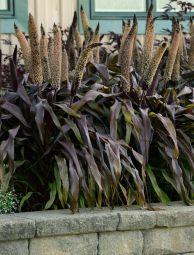
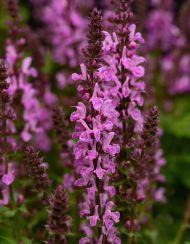
Rose Marvel from Darwin Perennials brings a rich, deep rose colour to the popular Marvel family. It can be positioned as a premium perennial item, creating more opportunity for grower margin. It features a long flowering window and re-blooms without being cut back. The largest flowers of any rose or pink S. nemorosa on the market. Ultralarge flowers provide more colour and impact in the landscape. Ideal in USDA Zones 4-9. Plant height 25-30 cm and plant width 25-30 cm. darwinperennials.com



This great, big, green-to-gold bell pepper from Burpee offers resistance to bacterial leaf spot, tobacco mosaic virus and potato virus Y. The plants produce loads of fruit – a great addition to the vegetable garden! Days to harvest 80; fruit size 10-13 cm; plant height 61-76 cm; and plant width 61-76 cm. burpeehomegardensbrand.com


From fungicides to miticides to biological solutions, Bayer is dedicated to the research and development of the products that keep your crops and business blooming.
Kontos, Rhapsody, Forbid, Previcur, Scala, Compass 50WG, DeltaGard SC, Florel, Intercept, Ronstar
New for 2018: Specticle G and Luna Privilege Greenhouse
LISA McLEAN | aginnovation.ca
The Growcer brings year-round food production to hard-to-feed places.
If you’ve visited or lived in a remote community in Canada, chances are you weren’t there for the salad. In many regions that are far from traditional food production systems, fresh vegetables are inconsistent and costly due to the distance and effort required to get them there.
Now, an Ottawa-based company with a focus on food access is helping remote communities grow fresh vegetables 365 days a year, thanks to containerized growing systems. Corey Ellis, chief executive officer and co-founder of The Growcer, says the company offers plug-and-play hydroponic systems that allow local entrepreneurs to grow vegetables commercially, even when outside

The Growcer offers plug-andplay hydroponic systems that allow entrpreneurs to grow commercial vegetables, even when it’s -50 C outside.
temperatures are -50 C.
“We knew that any food production system we developed for the arctic and remote regions would need to be easily dropped into communities that lack road access, and it would have to be ready to use, without relying on skilled tradespeople,” Ellis says.
Thanks to a partnership with U.S.-based Vertical Harvest Hydroponics, The Growcer provides shipping containers set up with vertical hydroponics growing systems. Each system has the capacity to produce approximately 12,000 pounds of fresh produce – that’s enough for five servings of vegetables for 100 people per day. And the systems are designed to be modular: Operators can grow their business incrementally, reinvesting profits as demand is generated.
Systems don’t need to run at full production, and because product is delivered locally, operators can harvest product as need arises. But Ellis says most operators report local interest in fresh produce
is on the rise in their communities.
“In one community without road access, the customer had the system flown in, and now they can’t keep product on the shelf,” Ellis says. “It grows, it’s harvested and it flies off the shelf in the local grocery store.”
As a social enterprise, The Growcer team has a strong interest in bringing value to the communities it serves. Team members write a business plan with operators, they do a full market assessment to help them understand what people are eating, and they work with them to determine what they might grow at different price points.
The Growcer team members also travel to communities to provide training. To date, the company has established projects in a variety of regions, from Churchill, Manitoba, to Iqaluit, Nunavut.
“We’re not trying to replace traditional diets with produce, but we are interested in looking at how we can enhance them, to make those diets well-rounded and replace unhealthy store-bought foods,” Ellis says.
For example, bok choy is known to pair well with iron-rich foods. In some Northern regions the vegetable has been readily accepted as a valuable addition to traditional dishes such as caribou stew.
“The people who are making decisions about what they should be growing are in the community, and that allows for a quicker and better response to each community’s food issues,” Ellis says. “And it allows the money to stay in the community – the real meaning of economic development, at the community level.”
He says The Growcer continues to measure and make decisions based on social and community development. The company was founded while Ellis and his co-founder Alida Burke were students working on a project in Nunavut, with the help of Startup Garage, a business incubator program at the University of Ottawa where Ellis will soon graduate.
As businesses continue to grow, he sees opportunities for individual communities to expand operations, and provide more value-added products and local employment opportunities through food processing, all led by local entrepreneurs.
This feature was originally published on the AgINNOVATION website. Reprinted with permission.






HUB International is a leading global insurance brokerage that provides risk management services and a broad array of property and casualty, life and health, voluntary benefits and personal lines insurance.
Since 1963 we have been providing high quality insurance protection to our clients from coast to coast.
Experienced, local service is available through our national network of offices.
For a quality product, local service and very competitive pricing give us a call today.
TED TENNISON | trustedfreshness.com
Many of Western Canada’s grocery and food service industries are awaiting final commissioning of Trusted Freshness™ Ltd., Canada’s newest vertical farming enterprise. The 37,000-square-foot growing facility in Leduc, Alberta is going through the final steps before launching its commercial operation.
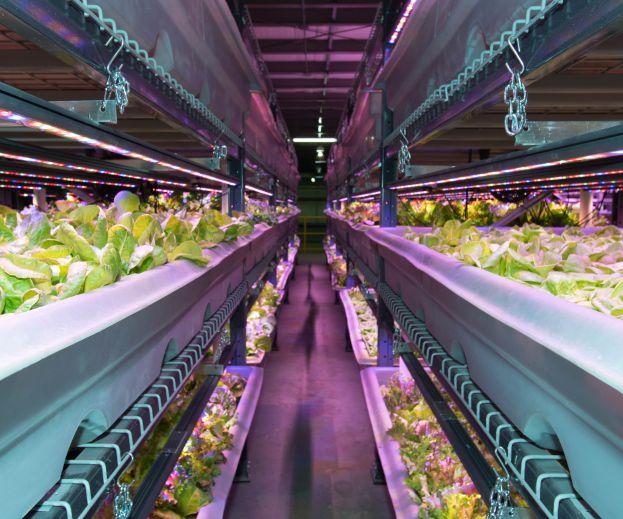
ABOVE
Trusted Freshness™
Ltd., Canada’s newest Alberta-based vertical farming enterprise, grows a variety of micro greens and leaf greens including bok choy, Butterhead and gourmet lettuce, Tuscan kale and a variety of mild and spicy micro greens.
The facility provides a controlled indoor urban environment capable of growing a wide assortment of produce including microgreens, leafy greens and vine crops. Many of the crops can be grown and harvested within a seven- to 30-day cycle, providing fresh produce year round.
Through the use of proprietary Aquatigro™ LED grow lights, Trusted Freshness provides plants with precisely the right spectrum of light for richer and healthier yields from germination to harvest. The lighting system, which was designed and tested in Canada specifically for Trusted Freshness vertical farming operations, ensures the light is energy efficient and radiates little heat, enabling the lights to be located very close to the plants for maximum growth and yield.
The water system in which the produce grows receives essential nutrients and micronutrients to ensure the growing crop achieves maximum growth, colour and flavour profile. Trusted
Freshness uses proprietary Aquatigro Special Nutrient Blend that has been developed for its vertical farming operation. The nutrition blend is designed and tested specifically to yield top quality leafy green produce and vine crops by ensuring maximum nutrient solubility and root uptake.
The local availability of produce ensures that the nutritional benefits of the produce are not reduced by long transportation hauls, which is the case with the produce imported from southwestern U.S. and Mexico.
“Our franchise approach to vertical farming provides our franchisees with tremendous flexibility in how they can operate their business,” says CEO and chief marketing officer Jim Schroeder. “The franchisee may wish to simply invest in a Trusted Freshness vertical farming module and have the management of the unit out-sourced or operate their franchise themselves.”
The franchise business model enables investors to operate their individual growing enterprises in a co-located facility, while at the same time taking advantage of shared core services such as hands-on training, germination, packaging, distribution and marketing of their produce.
“The demand for Trusted Freshness produce is significant,” Schroeder says. “Since word got out about our vertical farming facility, we have been approached by numerous groups interested in purchasing our freshly-grown produce – grocery retailers, the food service industry and even individual chefs who are looking for that specific herb or microgreen that will give them an extra advantage in their culinary offering.”
“We are delighted with the continued interest our Trusted Freshness operation is receiving from the local business community, the rest of Canada and other parts of the world,” says Schroeder. “We are already investigating additional locations that would be a great fit for a Trusted Freshness operation.”
The worldwide market for vertical farming operations is projected to be worth a minimum of $3.88 billion U.S. by 2020.
For more information on Trusted Freshness™ Ltd., visit trustedfreshness.com or contact CEO Jim Schroeder at 780.690.8985 or via email at jim@trustedfreshness.com.






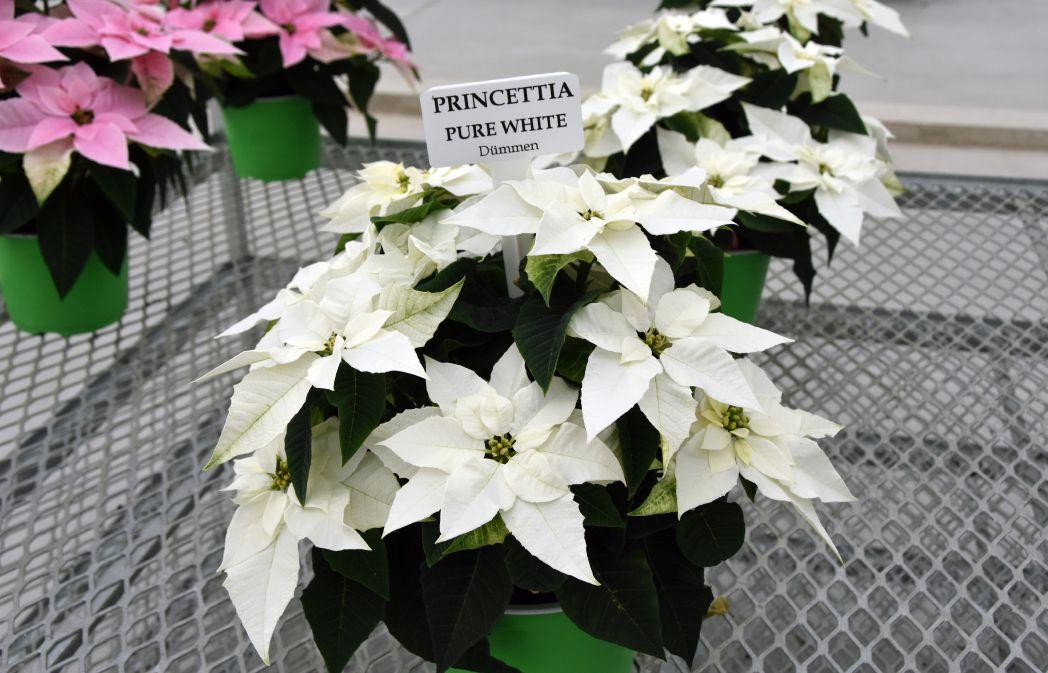
Try new pot sizes and a number of plant combinations for continued success.
BY MELHEM SAWAYA
The 2017 poinsettia season was much better than even the top sales we saw in 2016. This past year marks three years in a row where poinsettia production, sales and consumer satisfaction has improved. Sales were better for the growers in general, but not great for all retailers – depending on the product sizes, packaging, displays and sales timing. And consumer satisfaction depends on which product they ended up with.
Sales and the market: Last year featured a slow start for sales compared to other years, but the season finished strong. It featured great weather for sales and shipping with no snow or frozen loads or blizzards to keep shoppers away.
The slow start was only for outlets that raced to put poinsettias on their shelves before
ABOVE

Remembrance Day. Poinsettias are for Christmas and any push to try to sell them early is a recipe for serious sales shrinkage. Early products that do not move start to look bad, so when consumers were ready to buy, all they could find were sickly poinsettias or, at best, plants that were far from fresh. Timing is everything and no, we do not need snow to sell poinsettias. Some 70 per cent of total sales are in regions that never get snow.
About 65 per cent of the crop grown in Ontario was sold in Ontario, compared to 75 per cent last year and 95 per cent in 2015. The low dollar has helped with exports.
Growers and buyers establish their programs several months in advance of the season, so last minute or spot buying is almost nonexistent.
Interspecific Pure White Princettia from Dümmen Orange and Solar Pink from Beekenkamp.



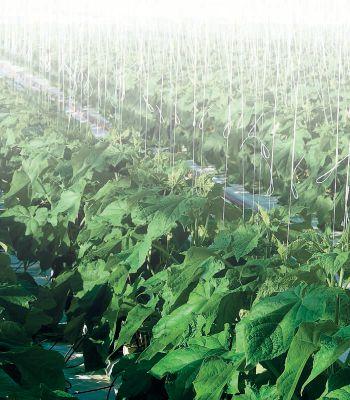



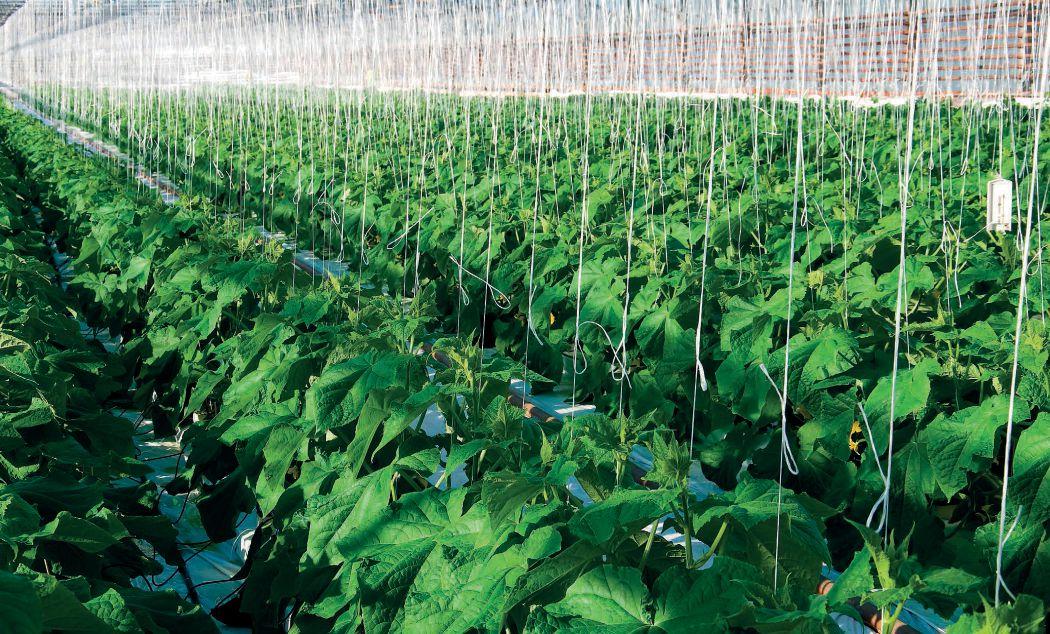

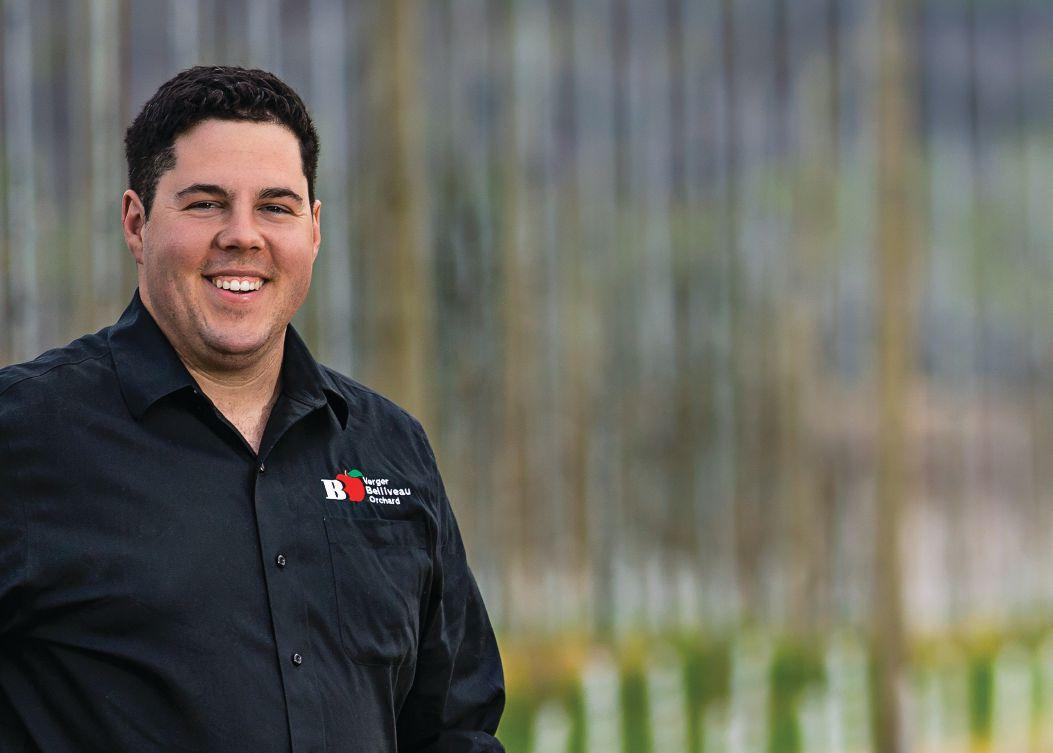
Buyers for large chains have to have consistent suppliers for more than one product. That is why spot buying is the last choice for them. A buyer managing 100-plus stores does not want to deal with several suppliers. This reduces possible price cutting late in the season because growers and buyers will know what they are getting into right at the start of growing the crop.
A long overdue realization from growers is that the cost of shipping is up
by 30 per cent over the last few years. They’re focusing on stores within their regions. Similarly, buyers want to work with suppliers close to their stores.
Calculating costs should include every aspect of growing and selling the crop. There was not much time in 2017 to negotiate price increases to account for rising wages, but that should change for the coming season.
The demand for larger pot and plant sizes last year was less than normal – all
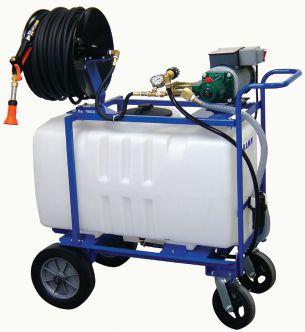






pot sizes were completely sold out except the 8” pot size. Consumers like smaller poinsettias for their price point and the size of living quarters. It’s also true that the size of the new varieties in a 6” pot is much fuller with many more blooms that can easy compete with the 8” pot size.
The new sizes for successful production that give consumers a better chance to succeed in having a longer lasting plant are as follows: 2”, 5” and 7” pots should have a single plants per pot, while containers of 10”, 11”, 12” or 13” need three plants.
I know it is hard to change growing the old traditional sizes, but by working with your buyer and advertising the benefits, you will be ahead of the curve in providing a much better product. A few growers tried these new pot sizes and number of plant combinations and were very successful.
Different varieties require different production schedules for different sizes. Following these sizes is a good thing because that is when the plants are used to their maximum potential at the most economical cost. What is more important is that it will give the consumer a better chance of keeping the plants for much longer time.
Production: Most stock producers are doing a better job every year providing quality, fairly pest-free cuttings. The whitefly battle was almost negligible the past two poinsettia seasons, whether growers used biologicals or chemicals. There were no signs of Lewis or spider mites, though many growers are treating preventively for mite control.
The most effective control seems to be a combination of biologicals at the beginning and chemicals at the end of the crop. However, if the goal is for chemical-free greenhouses, we’ll need biological producers to come up with beneficial predators that can clean up the last of the whiteflies. We used to have Eretmocerus mundus as a predator that could do the job but they stopped producing it because it is not allowed in the states and is not easy to produce. I know of one biological company that is going to produce it, but availability will be restricted to those growers using the company’s total biological program for other pests.
Last season was the best ever for rooting poinsettia cuttings. The cuttings
arrived on time and were from much healthier stock plants. The biggest improvement is with the improved skills of the propagators who covered every little detail to come up with the best procedures to have healthy, strongly rooted cuttings – especially from the rooting stations. In addition to all of this the excellent fall weather helped in having the best poinsettia crop ever. The crop ended up:
• Earlier than normal due to a cool September at bud set time and the higher solar energy.
• Featuring larger than normal bracts and plants.
• With lower than usual heating costs.
• With minimal shrinkage, if any.
There were negligible disease pressures, except for the few operations that had a Fusarium fungus that was identified later on in the production cycle. For the first time, a few poinsettia plantings got infected with Fusarium This is strange because the same lots of cuttings were planted in different locations; one lot got the fungus and others did not. It is not really clear what caused the problem, but it is important to watch for:
• Bract edge burn.
• No Botrytis
• And if the plants were ordered for a reasonable sale time there was very little shrinkage in the stores.
Few new poinsettia varieties are going to be in production for 2018. Trial the new varieties to decide if you should add them to your product line, and if you do, remember to drop your least desirable variety.
Varieties that are good for 5” pots are not necessarily good for 10” containers, or at least you need to modify the production schedule drastically to use the same variety for every size. Read the variety specs and try it in the new sizes. Red poinsettias are at least 93 per cent of the total colours, with four per cent white, two per cent are pink, and the rest are in the miscellaneous category.
growers and educators met once a month starting in June to discuss production issues. The main focus has been on whitefly control. Next season, we are going to do the same thing but with more topics.
Insects: Whitefly is the major pest in poinsettia. The greater use of targeted biological control, cleaner stock cuttings and the dip treatment of cuttings before sticking have combined to keep the problem under control the past few years. Infestations can be brought in from other plants from the outside that you are storing for the winter.
Diseases: Diseases were no issue last season. This was largely due to the good weather, great cultivars and by growers paying closer attention to cultural practices. There were no problems at all – even without the use of any fungicides, biological or chemical. The exceptions were those greenhouses where Fusarium was a problem.
Among my customers, I noticed heat delay in couple spots because of heat valve malfunctioning. At another location, a single light bulb over a walkway kept a 50-foot circle of plants green for a time; however the problem was corrected in time and the crop was shipped just before Christmas!
• Grow varieties you are familiar with and try new ones on a small scale.
• Calculate your costs for any required specs and do not forget about packaging and shipping.
• Take an order when there is still some margin profit and not just dollar sales.
• Never grow on pure speculation.
• Having to buy plants when you run out of plants at the end of the season is a good indication you are making progress on profitability.
• Do not cheat on what the crop needs to grow properly – it will cost you much more at the end if you do.
• Start a study group with growers in your region.


Regardless of which variety you grow, don’t overfill the pot with planting media. It should be just below the pot rim – not flush with the rim. This gives retailers and homeowners a reservoir to be able to water the plants effectively. Two seasons ago a study group of
• And last, but not least, if all the factors that took place last season are repeated this year, then growing poinsettia could be profitable. This is not a suggestion to increase production because increasing production without booked orders will lead to price-cutting.




If left unchecked, they destroy an entire crop quickly. Females can lay up to 20 eggs per day, and these can hatch in as few as three days. You can see why these mites are so dreaded.
BY DR. M. ISHTIAQ RAO
As a grower, one of your worst nightmares is finding out that you have a potential pest in your grow space. The sight of your hard work looking sickly can be very disheartening to say the least.
Your first step is to troubleshoot the problem, and the best way to do that is to first start looking at some of the most common offenders and the types of damage that they cause.
Tetranychus urticae, commonly known as the spider mite, will leave evidence that can be seen by the naked eye. An individual spider mite can be hard to spot at first as they are less than a millimetre in size and can vary in colour.
One thing to look for is tiny off-white to yellow specs on the tops of your plants leaves. This is caused by the mites feeding on the chlorophyll.
From there, your next step is to look at the underside of the leaves for signs of silk webbing that they spin to protect themselves from predators (hence the “spider” reference). If your eyesight is really good, you can possibly see the spider mites themselves. In extreme cases, the webbing can cover
the crown of the plant.
Now if you are still unsure if spider mites are the pests at hand then the one way to tell for sure is to get a grower’s/jeweller’s loupe and look along the veins of the underside of the affected leaves, as that is where they like to congregate.
By now you have determined that it is indeed the dreaded spider mite.
If left unchecked, they destroy an entire crop quickly. Females can lay up to 20 eggs per day, and these can hatch in as few as three days. You can see why these mites are so dreaded.
You now need to plan your strategy for battle. Normally, we suggest starting off with a good rinse of your plants with cold water before your lightsout period. Make sure to get the underside of the plants as thoroughly as possible as again that is the spider mite’s preferred place to hide out. This has two functions.
• Firstly, spider mites do not like humidity so this practice slows their reproduction.
• Secondly, P. persimilis (a predator of spider
mites) in turn likes humidity so their reproduction would increase.
We would suggest waiting a day or two, then you should spray the plant again just before the lights out period with a registered insecticidal soap. Make sure to get the underside of the leaves as this is the only way that it will come into contact with the spider mites.
Some growers swear by home remedies such as dish soap mixtures and tobacco teas or even cayenne pepper concoctions. They may kill your spider mites, but potentially risks your product being recalled. The commercial product methods are reliable, but usually they are also the ones that cost you some of your hard earned money, unfortunately.
Above all, preventive measures are always the best method of fighting these harmful pests. The most simple preventive tactic is to keep a clean grow space at all times. At the end of your crop, do a thorough cleanout, and during the crop stay on top of dead, fallen leaves and weeds.
The best strategy is to take care of spider mites in the earliest plant stages. The farms that have older plants and new plants in the facility at the same time will likely see carryover of spider mites onto those new plants. This can be a real problem, especially if workers move from older plants to new plants in the same day. If you’re one of these farms, as soon as you bring your new plants in, direct your workers to handle the new plants first thing in the morning, and make sure that you have a strong preventative barrier.
Other methods of fighting these pesky buggers is by way of predatory mites such as Hypoaspis miles, Amblyseius andersoni, A. fallacis, A. californicus, and Phytoseiulus persimilis, among others. Predatory mites come packed in a bottle or tube with either sawdust, corn grit or vermiculite and need to be applied directly to the affected leaves Just shake a few onto the top of the affected leaves and the predatory mites will work their way to the back of the leaves to find the spider mites.
With so many species to choose from, how do you decide when to use what?
Amblyseius species make great preventive tools because they are general predators, and in absence of mites they can feed on other unwanted insects. Rather than waiting to have a spider mite outbreak and experiencing the sad sight of your plants covered in webs, you can simply sprinkle these mites around on your plants evenly as a blanket.
Similarly, Hypoaspis miles can work wonders for preventing any damage on your plants at all. It works preventively and can be distributed in the greenhouse well before the plants are even brought in. Since it is a soil-dwelling predatory mite, it can be added along the posts, and along the walkways and outer perimeter of the grow facility. These are all the places where spider mites tend to hide for diapause, when nothing else can reach them.
If you’re in the situation where spider mite has become established on your plants, the only thing that can rescue the situation is Phytoseiulus persimilis because it is host-specific and the only food in medical marijuana for this predatory bug is spider mites. Each could handle up to 20 spider mites. The earlier you can detect and treat those spider mites, the cheaper the treatment will be.
Keep in mind that persimilis are more effective under prime conditions. The temperature should ideally be between 7080 F (21-26 C) and the relative humidity should be approximately between 60-90 per cent.
These conditions, however, don’t necessarily coincide with all the growth stages of the cannabis plant. In the flower stage, you to want lower temperatures as well as much lower relative humidity levels, because humidity can cause mould issues. Persimilis applied during the post-flowering stages will not perform well because they are being thrown into unfavourable conditions. If, however, you did these applications against spider mites prior to the flowering stage, your resident population of persimilis will be better able to adapt to this temperature and humidity shift. To add persimilis early is a recipe for success. Bare this in mind when planning your attack strategy.
Make sure to take the time to inspect your plants on a regular basis and rinse them off once in awhile as well. A proactive and dedicated pest scout will stay on top of every single pest spot in the facility, and can save you time and money in the long run. A grower that is in touch with their plants will likely be more successful in the long run.
Dr. M. Ishtiaq Rao, CEO of Crop Defenders Ltd., is a PhD in entomology who is dedicated to the eradication of horticultural pests through IPM methods. Crop Defenders Ltd. utilizes biological knowledge of pest and beneficial insect species in order to manage pests cost-effectively and in a way that is cohesive with a healthy environment. ishtiaq@cropdefenders.com


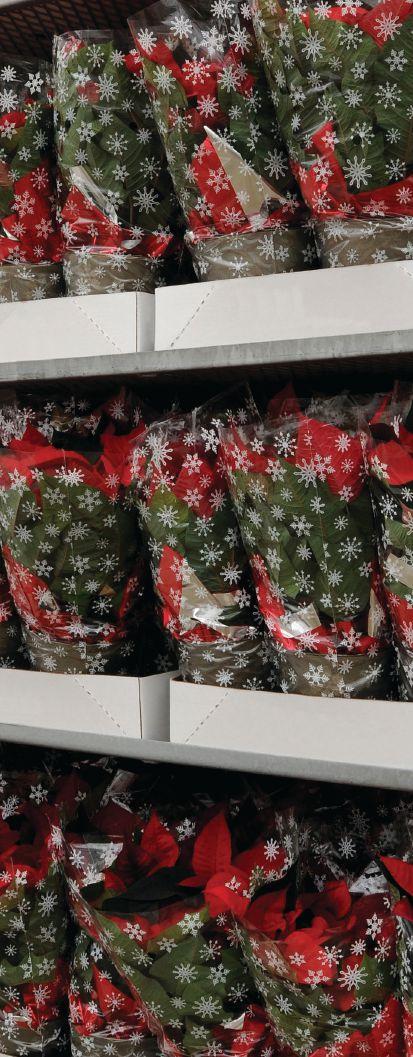
V-shaped habits mean you can sleeve our poinsettias and ship them to stores with less


Be diligent about sanitation and other “clean start” measures, focus efforts on crops that are known pest magnets, and be willing to play a little with production strategies to decrease pest damage.
BY DRS. SARAH JANDRICIC AND CHEVONNE CARLOW
Overall, 2017 was a pretty good year for Ontario’s spring flower crops in terms of pests. Insects like western flower thrips were fairly low (no heavy fly-ins like in 2016) and more severe diseases were scarce. Here are some tips for how we can keep 2018 going in the same direction. Start Clean – and Keep it Clean: Unlike 2016, we hardly saw any black root rot (Thielaviopsis), even in highly susceptible crops like calibrachoa last year. Part of this might be attributable to greater awareness of this disease. Growers who had dealt with this before adopted more stringent sanitation practices, and applied prophylactic fungicide drenches. Going into 2018, Fusarium seems like it may be more of a problem

that could extend into the spring. Here are some examples of sanitation measures that work to prevent or reduce the spread of these, and other, diseases:
• Always wash surfaces new plants will be put on with a cleaner to remove any organic matter. This includes benches and floor coverings. Consider power washing where possible. Followed by a disinfectant such as an ammonium chloride compound to help remove any long-term resting spores of diseases.
• Control your fungus gnats. Fungus gnats might just seem like a nuisance, but even moderate levels are a cause for concern, since both the larvae and adults transmit plant pathogens
ABOVE Spring is a busy time for growers, but if you never take the time to try out new techniques or technologies, you’ll never know if production can be improved.
through their excrement, or even just on their legs. (Think of them like the germy toddlers of the insect world.) Keeping them under control prevents a problem in one section from spreading to other places/crops.
• Use new pots and trays where appropriate. This may help reduce disease incidence in highly susceptible crops, since no sanitation measure is 100 per cent perfect.
• Culling or isolating infected plants, especially in propagation. Since curing a disease with chemicals can be a crapshoot (depending on the disease stage, chemicals available, and crop susceptibility), it may be better to immediately throw out any affected cuttings/plants and treat the rest of the area preventatively. This is especially true of root rots, where getting the plants to bounce back can be difficult.
However, disease prevention is not just about keeping things clean. Even with the most stringent practices, it’s almost impossible to have a facility that’s totally free of diseases like Fusarium and Pythium that are rampant in the environment, and can even come from your water supply (e.g. rain water collection). So, it’s also about making sure the environment is an inhospitable to those diseases as possible.
One way to do this is to be familiar with the conditions under which certain diseases thrive, and avoid these in your production practices. For example, black root rot thrives at high pH levels. Keeping your pH between 5.8 and 6.2 is key in supressing this disease, and also helps ensure your plants are getting the most out of their feed. Fusarium likes warm soil temperatures and can survive separately from any plant material on soil particles. One grower tackled his recurring Fusarium issues by raising his potted plants off the tarp on upside down trays, thereby increasing air flow and reducing contact with a potential contamination source.
In terms of insect pests, starting “clean” is also important, but obviously requires a different set of tools. Drs. Michael Brownbridge and Rose Buitenhuis wrote on this in the May 2017 issue of Greenhouse Canada – you can read online here: http://bit.ly/2qRiZDO.
Know Your Crops and Pick Your Battles: Understanding which plants are likely to attract which pests is important for three reasons:
• Scouts can focus their efforts.
• Spend your IPM dollars where you need
it most.
• Inform where to make preventive chemical treatments to avoid bigger problems later.
Make Time to Try New Techniques: Spring is a busy time, BUT if you never take the time to try out new techniques or technologies you’ll never know if production can be improved. Setting up small-scale trials is relatively easy, doesn’t require long-term commitment, and can be done with the assistance of a consultant or OMAFRA specialist.
One technique researchers and IPM practitioners are playing with in spring crops is decreasing nitrogen (N) levels. We know that floriculture crops are generally over-fertilized. While this may not result in harm to the plant, fertilizer is a significant cost for producers. Higher nitrogen in plant tissues also means more food for pests, potentially requiring more pest management inputs and increasing risk of crop losses.
In spring 2016, we ran a small study with five common spring bedding plants, to see if we could produce the same quality plant using less fertilizer. Our results showed a reduction to 150 ppm of N (in a 20-8-20 mix) from the usual 300 ppm leads to an increase in plant biomass (dry weight) without any difference in time to flower or overall size of the plant.
Similarly, in 2017 we saw no differences in time to flower or flower height in gerberas, and little difference in potted chrysanthemum canopy height and size after pinching by reducing nitrogen levels. There were no signs of deficiencies at any rate tested (100, 200 and 300 ppm of N in a 17-5-17 mix with micronutrients). Although numbers of thrips were similar between treatments, actual feeding damage from thrips on was lower in 100 and 200 ppm fed-plants.
Conclusions: By being diligent about sanitation and other “clean start” measures, focusing your efforts on crops that are known pest magnets, and being willing to play a little with your production strategies to decrease pest damage, 2018 may be your best spring production year yet.
Drs. Chevonne Carlow and Sarah Jandricic work together at OMAFRA to tackle needs of the floriculture industry. Carlow’s speciality is plant production and the greenhouse environment; Jandricic works on IPM of insect pests and diseases. They combine their specialties to address greenhouse production as a whole.







Visitors to the University of Guelph garden trial locations cast their votes.
BY RODGER TSCHANZ
This year’s article reporting on the 2017 trial season will look at both the favourites of visitors to the trial gardens as well as other unique entries that performed very well in the trials at Vineland (containers only), Guelph (containers and ground beds), Milton (ground beds) and the Royal Botanical Gardens (ground beds).
The top 10 favourites as voted by attendees of the open houses at all four garden sites are presented in table format. Plant performance descriptions and garden experiences with some of the “New(er) for 2018” are included as well.
Capsicum ‘Wicked’: This ornamental pepper has a dark green leaf colour and a compact growth habit. The conical fruit starts off dark purple in colour ripening to red. The fruit is highly visible throughout and on top of the plants. It is suited for both container and ground bed uses wherever compact growth is desired. “Blaze” is another ornamental pepper with similar growth characteristics as “Wicked” but its fruit starts off yellow ripening to an orange colour. Both of these cultivars are highly suited for use in fall programs. Source: Ball Calocephalus brownie ‘Bed Head’: This
ABOVE
unusual ornamental has been given common names such as “Cushion Bush” and “Silver Bush.” The creatively evocative cultivar name of “Bed Head” has a very good chance of becoming another common name. It has fine silvery foliage and stems that branch freely to create a ballshaped plant composed of a network of soft, spikey vegetation. “Bed Head” is grown primarily for its silvery foliage; no bloom was observed throughout the 2017 season. The plant grows well in warm and drier growing conditions but is cool weather tolerant and survived periods of light frost in the 2017 trials. It is suitable for both containers and ground beds. ‘Bed Head’ is also a great choice for planting in beds where potential for irrigation is limited. Selections of “silver bush” have been available from other suppliers in the past but this is reportedly the first cultivar of Calocephalus that is widely propagated from seed. Source: Benary Cuphea ‘FloriGlory Diana’ (hybrid): This is a new All-America Selections vegetative winner that was judged and found exceptional during the 2017 trial season. The magenta flower colour of the entry was significantly different than the
“Bed Head” is grown primarily for its silvery foliage. It’s suitable for both containers and ground beds.
Armitage’s extensive travelling, teaching and trialling experiences provide a depth of understanding of the best ornamental perennials for North American gardens unparalleled by any other garden writer.
One of the most definitive and conclusive books written about perennials, the first edition was designated as one of the best 75 books written in the last 75 years by the American Horticulture Society, and the third promises to be even better.
The third edition of “The Big Perennial Book” (as it is fondly referred to by many practitioners) describes 3,600 species in 1,224 pages. More than 300 colour photos complement detailed text filled with the author’s pointed observations of plant performance, cultivar selection and current taxonomy.
Armitage’s trademark wit and passion are both in abundance, making reading as pleasurable as it is informative.





Table 1: On Aug. 9, 2017, a garden tour took place at the University of Guelph’s Ground Bed trial in the Royal Botanical Gardens –Hendrie Park, Burlington, Ontario. The following table indicates the top 10 favourites of participants in that tour.
Genus Cultivar Source
Helianthus Sunfinity Syngenta/Goldsmith
Capsicum Wicked Ball
Pennisetum Copper Prince Ball
Verbena Lanai Twister Dark Red Syngenta
Cyperus Graceful Grasses Prince Tut Proven Winners
Zinnia Profusion Red Sakata
Solenostemon FlameThrower Chili Pepper Ball FloraPlant
Zinnia Zahara Double Raspberry Ripple Ball
Dahlia Dahlightful Crushed Crimson Proven Winners
Zinnia Zany Rose Picotee Dümmen Orange
lilac-coloured comparisons; the magenta coloured petals stood out strongly against the lilac coloured comparisons. The entry’s flower size and flower number was significantly larger and greater than the comparisons as well. Source: Westhoff Helianthus ‘Sunfinity’ (interspecific hybrid): This long blooming annual sunflower has been receiving a lot of well-deserved attention in the gardening media. For the greenhouse grower, Syngenta has exacting guidelines for the

Table 2: On Aug. 10, 2017, the University of Guelph Container Trial at Vineland held a combined public/industry open house during a twohour period in the afternoon. The following table indicates the top 10 favourites of visitors on that day.
Genus Cultivar Source
Zinnia Zany Rose Picotee Dümmen Orange
Petunia Surprise Magenta Halo Dümmen Orange
Verbena EnduraScape Blue Improved Ball
Verbena Superbena Stormburst Proven Winners
Calibrachoa Superbells Blue Moon Punch Proven Winners
Petunia Sweetunia Miss Marvel Dümmen Orange
Verbena Superbena Violet Ice Proven Winners
Begonia Megawatt Red Bronze Leaf Ball
Calibrachoa Superbells Double Ruby Proven Winners
Callibrachoa Callie Orange Sunrise Improved Syngenta
proper application of PGRs and pinching to produce highly marketable container plants. (NOTE: Unfortunately the 2017 trial plants received only one PGR application within 48 hours of sowing and were not pinched, potentially changing garden performance/appearance slightly). Once out in the garden these plants grew to an average height of 125 cm and a spread of 90 cm by the end of the season. Removal of the senesced flower heads would have improved the garden appearance of the plant by keeping the focus on fresh blooms. The plants in the trials were not deadheaded and acted as a self-perpetuating bird feeder throughout the summer; they were especially attractive to goldfinches. In a related trial “Sunfinity” was evaluated for cutflower production. On average, each plant produced 12 marketable stems over the course of the growing season with head diameters ranging from four to six cm. Source: Syngenta Pennisetum glaucum ‘Copper Prince’: This ornamental millet is relatively short and tillers freely to create a very bushy specimen by the end of the season; as many as 12 mature flower/ seed heads were counted on one plant during the 2017 trial season. The inflorescences look like upright, dark brown, bushy foxtails. The foliage darkens from light green in the greenhouse to coppery brown in the garden when exposed to full sun.
Table 3: Top annual picks from the industry open house (Aug. 17, 2017) at the University of Guelph Trial Gardens at the Landscape Ontario office in Milton, Ontario – Annuals (Ground Bed Category)
Cultivar Source
Gerbera Garvinea Sweet Memories Florist Holland
Helianthus Sunfinity Syngenta/Goldsmith
Argyranthemum Pure White Butterfly Proven Winners
Pelargonium Calliope Medium Pink Flame Syngenta
Pennisetum Copper Prince Ball
Zinnia Zahara Double. Raspberry Ripple Ball
Capsicum Wicked Ball
Dahlia Dahlightful Crushed Crimson Proven Winners
Bidens Campfire Fireburst Improved Proven Winners
Calocephalus Bed Head Benary
Table 4: Top 10 winners from two days of public open houses (Aug. 18-19, 2017) at the Guelph Trial Gardens – Annuals (Ground Bed Category)
Genus Cultivar Source
Salvia Mystic Spires Improved Ball
Salvia Rockin’ Playin’ the Blues™ (Imp) Proven Winners
Celosia Asian Garden Murakami
Capsicum Wicked Ball
Eustoma Rosanne 1 Green Sakata Seed
Cyperus Graceful Grasses Prince Tut Proven Winners
Delphinium Excalibur Mix Syngenta
Capsicum Blaze (formerly ‘ Harlequin’) Ball
Zinnia Zany Rose Picotee Dümmen Orange
Celosia First Flame Red Ball
Overall seasons end height of the plant was approximately one metre. The compact habit of this specimen makes it a great choice for containers as well as garden beds. With its wide, corn-like foliage and persistent seed heads, ‘Copper Prince’ would seem to be another potential candidate for the late summer/fall marketing season. Source: Ball
Salvia farinacea x longispicata: The two Salvia farinacea x longispicata cultivars “Mystic Spires Improved” from Ball and “Rockin’ Playin’ the Blues” from Proven Winners had similar garden and container appearance and performance. The heavy bloom production was appreciated by both human and pollinator visitors alike. The drought and light frost tolerance exhibited by these cultivars extended the ornamental and nectar production well into the autumn.
Source: Ball and Proven Winners
Zinnia ‘Zany Rose Picotee’: All zinnia entries in the Guelph trials, up to this point, have been propagated from seed. The Zany series from Dümmen Orange was propagated vegetatively. This particular series is a vigorous grower and on the greenhouse bench may require some growth management. Its freely branching habit helps it fill in space in containers as well as the landscape. “Zany Rose Picotee” is covered in small, 5.5-6.5 cm diameter blooms composed of dark pink petals with white tips. This zinnia appears to be resistant to powdery mildew as well.
Source: Dümmen Orange.
Rodger Tschanz is a greenhouse technician and sessional lecturer at the University of Guelph. In 2001, he was asked by the Department of Plant Agriculture to create and manage the university’s Ornamental Trial Garden program.
CLASSIFIED RATES: Minimum order $75.00 or 84¢ per word, word ads must be pre-paid. CLASSIFIED DISPLAYS: $72.00 per column inch, or $5.14 per agate line. GENERAL INFORMATION: Payment must accompany order. Copy required by the 1st of the month preceding publication. All advertising copy subject to the approval of the publisher. Send order and remittance to: Classified Dept., Greenhouse Canada, P.O. Box 530, 105 Donly Dr. S., Simcoe, ON N3Y 4N5
CLASSIFIED RATES: Minimum order $75.00 or 84¢ per word, word ads must be pre-paid. CLASSIFIED DISPLAYS: $72.00 per column inch, or $5.14 per agate line. GENERAL INFORMATION: Payment must accompany order. Copy required by the 1st of the month preceding publication. All advertising copy subject to the approval of the publisher. Send order and remittance to: Classified Dept., Greenhouse Canada, P.O. Box 530, 105 Donly Dr. S., Simcoe, ON N3Y 4N5
FOR SALE: BIOMASS FURNACE. Decker brand – multi-fuel boiler. Model: dbb60 2005, 3.5 million btu furnace, Fuel type: corn/ pellet/coal. Comes with auto-self-cleaning blow system, 16” chimney assembly kit, 6”x20’ ash auger assembly kit and ash bowl. Includes 30-ton fuel storage silo, and silo loading auger. In excellent condition, heats 60,000 sq. Ft. Greenhouse + 7000 sq. Ft. Warehouse
Contact: Rob James 902-452-3829
FOR SALE: BIOMASS FURNACE. Decker brand – multi-fuel boiler. Model: dbb60 2005, 3.5 million btu furnace, Fuel type: corn/ pellet/coal. Comes with auto-self-cleaning blow system, 16” chimney assembly kit, 6”x20’ ash auger assembly kit and ash bowl. Includes 30-ton fuel storage silo, and silo loading auger. In excellent condition, heats 60,000 sq. Ft. Greenhouse + 7000 sq. Ft. Warehouse Contact: Rob James 902-452-3829
Email: sackvilleagi@eastlink.ca
Location: Nova Scotia Buyer@surplusgroup.com 02/1t/pd
Email: sackvilleagi@eastlink.ca Location: Nova Scotia Buyer@surplusgroup.com 02/1t/pd
AMA Plastics Ltd.
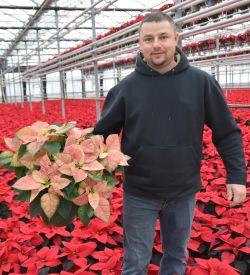


GARY JONES | Gary.Jones@kpu.ca
Surely we’ve all heard the saying: “What goes around, comes around.” So, when looking into “what’s new” on the pest front, it came as no surprise to hear of some familiar old foes. One of my faculty colleagues here at Kwantlen (Kristine Schlamp) tells me that “broad mites seem to be the pest du jour.” Following a recent meeting with several local biocontrol gurus, Kristine says this is “the third time I’ve heard this from pest people in the last six months.”
I first came across this pest about 25 years ago when it was responsible for devastating a number of cucumber crops in Yorkshire, U.K. It appeared from nowhere, casually threatened to be the next big pest, and then disappeared back into obscurity after a couple of seasons, hardly ever to be heard of again.
Until now, apparently, and in Canada.
One of the problems with this particular pest is that it is very hard to detect (they’re tiny), produces somewhat unusual symptoms that are easily confused with abiotic problems, and can be very difficult to control. But having them pop up as a “new” pest (again) begs the question: Where did they (just suddenly) come from? Maybe they got brought in. Maybe changes in control practices for other pests mean broad mites can now flourish. Maybe they’re there all the time and something
Talking of these old foes in the pest/disease arena, I’d love to know how much has been spent over the years on research to find ways of controlling Botrytis (grey mould) on greenhouse crops. You’d think we’d have that one cracked by now. But no, it’s a perennial problem that causes significant crop losses every growing season. Any grower worth thier salt knows the importance of start clean, stay clean, good greenhouse hygiene, proper pruning techniques, humidity control and other basic grower practices. So why is this still such a pain in the wallet?
Root mat in greenhouse tomatoes is another disorder that’s been around for a while but has made a resurgence as of late. It, too, seemed to be gone, only to resurface years later in a different country for whatever unknown reason. Just part of the new order of a truly global industry perhaps. But enough of looking at old problems. What about the future? We have a number of new crop production systems. Aquaponics, converted shipping container systems and vertical farming methods to name but a few. I wonder what these will bring in terms of new commercially important pests/diseases, or old pests that exploit these new opportunities? And we also have new (commercial) crops, such as cannabis. Apart from mites and mildews, what new challenges will appear as we venture into these unchartered waters?
Mealybugs are another old-timer causing trouble again.
just allowed them to become significant. Who knows. And maybe, they’ll disappear just as mysteriously as they came. By the way, if you ever want to see something in the natural world that seems slightly unfathomable, check out pictures of the females alongside the eggs they produce (size, shape) – it makes the mind boggle.
Mealybugs are another old-timer causing trouble again. While these are definitely not new, they never quite seem to really go away. They’re currently causing issues on many greenhouse ornamentals, in particular one of their favourite host plants; Phormium (New Zealand flax). While they have always been difficult to control, they now seem to be resistant to pretty much all approved insecticides, and depending on the time of year, many biocontrol options can be somewhat ineffective.
Researchers, plant breeders, biocontrol companies and pesticide manufacturers have consistently done a great job of helping growers keep up with controlling pest and disease organisms.
For example, if you didn’t catch it the first time around, check out the story of “Chili” the dog who is trained to find pepper weevil at Nature Fresh Farms (Greenhouse Canada, November issue and online here: http://bit.ly/2AQKbSM).
It seems that sometimes, when we look at what’s new in the field of pests and diseases, we don’t have to look too far and we don’t have to re-invent the wheel.
Gary Jones is Co-Chair of Horticulture at Kwantlen Polytechnic University in Langley, British Columbia. He sits on several industry committees and welcomes comments at Gary.Jones@kpu.ca.

